|
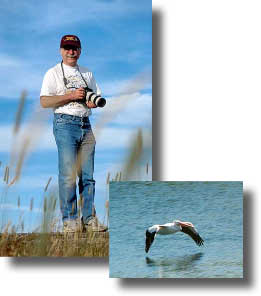
|
Dr. Allen S. Lefohn, President and Founder of A.S.L. & Associates, LLC, received his Ph.D. in physical chemistry from the University of California at Berkeley. He received his Ph.D. under Professor George C. Pimentel, who was a great scientist and a great mentor. Dr. Pimentel encouraged his students to look beyond the obvious. In the spring, summer, and fall, Dr. Lefohn cycles. In the winter and spring, he is an avid skier - both alpine and cross country. When time permits, he is active on the amateur radio frequency (ham) bands with the call letters KA7M. |
Over 60 years, Dr. Lefohn's research
has involved many areas, such as the evaluation and assessment
of ambient air quality standards, reference levels, Air Quality
Related Values (AQRVs), and critical levels for the Tribal governments,
as well as several national and international governments; the
assessment of adjustment procedure models for developing alternative
scenarios for the United States and Canadian air polluti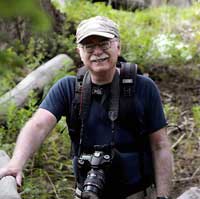 on
rulemaking processes; the analysis of air quality data for developing
exposure-response mathematical relationships for assessing the
effects of air pollutants on vegetation and human health; the
development of exposure/dose-response relationships describing
the effects of ozone and sulfur dioxide on vegetation; the evaluation
of the statistical methodology associated with epidemiological
studies relating air pollution to human health effects; the evaluation
of alternative forms and levels of human-health standards; the
development of hourly exposure regimes for controlled human health
laboratory studies; the development and application of spatial
interpolation techniques for estimating seasonal ozone cumulative
exposures; the characterization of European and North American
air quality and wet deposition data for the purpose of assessing
possible reasons for forest decline; the development of field
surveys to assess the effects of sulfur dioxide on agricultural
crops; and the analysis of acidic deposition wetfall and effects
data to better assess the potential for biological effects.
on
rulemaking processes; the analysis of air quality data for developing
exposure-response mathematical relationships for assessing the
effects of air pollutants on vegetation and human health; the
development of exposure/dose-response relationships describing
the effects of ozone and sulfur dioxide on vegetation; the evaluation
of the statistical methodology associated with epidemiological
studies relating air pollution to human health effects; the evaluation
of alternative forms and levels of human-health standards; the
development of hourly exposure regimes for controlled human health
laboratory studies; the development and application of spatial
interpolation techniques for estimating seasonal ozone cumulative
exposures; the characterization of European and North American
air quality and wet deposition data for the purpose of assessing
possible reasons for forest decline; the development of field
surveys to assess the effects of sulfur dioxide on agricultural
crops; and the analysis of acidic deposition wetfall and effects
data to better assess the potential for biological effects.
Dr. Lefohn has focused his research
efforts on understanding (1) the quantification and relationship
between pollutant exposure and naturally occurring processes
and (2) the possible effects of air pollutants on human health
and on the ecosystem. He is the editor and author of the popular
book Surface-level Ozone Exposures and Their Effects on Vegetation
published by Lewis Publishers, Inc., Chelsea, MI. He has extensive
international experience in the evaluation and assessment of
ambient air quality 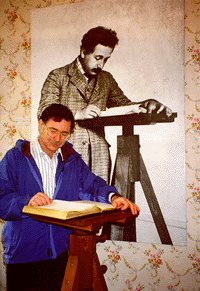 standards, air quality objectives, AQRVs, and
critical levels. Some of his most recent activities involve developing
a mathematical relationship between ozone exposure and dose and
their effects on vegetation and human health, better understanding
the variability of natural background ozone levels and its effects
on attaining human health and vegetation standards, designing
the ambient-like ozone exposure regimes for the major controlled
laboratory human health experiments (i.e., FEV1 experiments)
currently being used in the standard-setting process by the US
EPA, developing and evaluating models for assessing alternative
scenarios for the United States and Canadian air pollution rulemaking
processes, exploring the scientific rationale for explaining
the "piston" effect, which affects the ability to attain
the 8-hour ozone standard, and evaluating the possible effects
of surface ozone on trees in the southern Appalachian Mountains.
In addition, he has focused his attention on particulate matter
and the strengths and weaknesses of the current scientific database.
Several of his papers represent important contributions to the
research literature. In the 1980s and 1990s, Dr. Lefohn published
many papers associated with characterizing ozone and other air
pollutants, as well as the importance of the higher hourly average
concentrations and their effects on vegetation. The W126 ozone
exposure index, which Dr. Lefohn developed in 1985, continues
to be considered by the EPA as the US Federal vegetation standard.
In 1999, a paper that summarizes the results of his effort in
directing an international research team to develop and apply
a protocol for assessing global estimates of sulfur emissions
from 1850 to 1990 was published in Atmospheric Environment.
In December 1999, the sulfur emissions work was featured on the
Voice of America. The sulfur emission estimates associated with
this work are used today in global change models. In May 2001,
Dr. Lefohn and his co-authors published an important paper discussing
background ozone and the importance of natural processes in the
Journal of Geophysical Research. In the early 2000s, his
papers focused on surface ozone trends at remote monitoring sites
across the world and a critical review of exposure- and dose-based
indices for assessing ozone vegetation effects. In 2007, Dr.
Lefohn's paper with Dr. Milan Hazucha of the University of North
Carolina described results from controlled laboratory
exposures of human volunteers that indicated that higher ozone
hourly average concentrations elicit a greater effect on hour-by-hour
physiologic response than lower hourly average values, which
implies a nonlinear dose-response relationship. These results
were similar to his previous results for vegetation effects.
In 2008, Dr. Lefohn's papers focused on background ozone levels
entering the west coast of the United States and characterizing
long-term changes in surface ozone levels in the United States.
In 2009, Dr. Lefohn and his colleagues published an important
paper explaining the biological reasons for the nonlinear relationship
between vegetation responses to ozone and exposure and dose.
The paper describes how uptake of ozone into the plant, ozone
exposures, and defense processes relate temporally to one another.
These three processes appear to be out of phase with one another.
It is the out-of-phase relationship that explains why the higher
hourly average concentrations of ozone are more important than
the mid- and lower-levels. In 2010, Dr. Lefohn published three
important papers with his research colleagues. The first paper
dealt with the long-range transport of emissions associated with
biomass burning in Eurasia and how these emissions affect surface
ozone levels across the western US. The paper is an important
contribution to those who are interested in the subject of background
ozone. The second paper is an important contribution to those
interested in alternative human health ozone standards that might
be more appropriate than the 8-h average concentration form that
is currently used as the US human health ozone standard. Dr.
Lefohn was joined in this research by Drs. Hazucha and Adams,
and Mr. Douglas Shadwick. The paper goes beyond the focus on
an alternative form and level of the human health standard by
detailing the common response, induction, response, and recovery
(i.e., reversal) phases observed across most of the key studies
described. The paper is relevant for those policymakers and scientists
who have concerns that the 8-h human health standard may not
be attainable due to natural background ozone levels. The W90
exposure index proposed in the paper may be a rational approach
for overcoming the problems associated with the natural variability
of natural background ozone. The third paper described the trends
analysis by Dr. Lefohn and his colleagues on surface ozone for
the period 1980-2008 and 1994-2008 for metropolitan
and rural areas in the United States. The mathematical problem
of how to deal with a changing rate of trends is discussed in
the paper and examples are provided. Papers in 2011, 2012, and
2014 dealt with applying the LAGRANTO trajectory model to estimate
the importance of stratospheric ozone in affecting surface ozone
concentrations. His work continues to focus on the importance
of stratospheric and background ozone, as well as the different
behavior of human health and vegetation exposure metrics as a
function of surface ozone trends. In 2017, Dr. Lefohn published
an important paper with several international investigators dealing
with the behavior of various human health and vegetation exposure
metrics and how they behave differently in trends analyses due
to their dependence on different parts of the distribution of
hourly average ozone concentrations. For 5 years (2014-2019),
Dr. Lefohn served on the first Steering Committee of the international
research effort, Tropospheric Ozone Assessment Report (TOAR). The goal
of the project is to provide the international research community
with an up-to-date scientific assessment of tropospheric ozone’s
global distribution and trends from the surface to the tropopause.
The list of TOAR metrics
during the 2014-2019 period is available on our site. Besides
serving as a Steering Committee member of TOAR-I, Dr. Lefohn
was the lead author of a TOAR paper published in 2018. The TOAR
paper, Global Ozone Metrics for Climate Change, Human Health
and Crop/Ecosystem Research, is available by clicking here. For specific information concerning
Dr. Lefohn's research activities and findings, please visit the
publications section of this website.
To learn more about our previous trends analyses, please click here.
standards, air quality objectives, AQRVs, and
critical levels. Some of his most recent activities involve developing
a mathematical relationship between ozone exposure and dose and
their effects on vegetation and human health, better understanding
the variability of natural background ozone levels and its effects
on attaining human health and vegetation standards, designing
the ambient-like ozone exposure regimes for the major controlled
laboratory human health experiments (i.e., FEV1 experiments)
currently being used in the standard-setting process by the US
EPA, developing and evaluating models for assessing alternative
scenarios for the United States and Canadian air pollution rulemaking
processes, exploring the scientific rationale for explaining
the "piston" effect, which affects the ability to attain
the 8-hour ozone standard, and evaluating the possible effects
of surface ozone on trees in the southern Appalachian Mountains.
In addition, he has focused his attention on particulate matter
and the strengths and weaknesses of the current scientific database.
Several of his papers represent important contributions to the
research literature. In the 1980s and 1990s, Dr. Lefohn published
many papers associated with characterizing ozone and other air
pollutants, as well as the importance of the higher hourly average
concentrations and their effects on vegetation. The W126 ozone
exposure index, which Dr. Lefohn developed in 1985, continues
to be considered by the EPA as the US Federal vegetation standard.
In 1999, a paper that summarizes the results of his effort in
directing an international research team to develop and apply
a protocol for assessing global estimates of sulfur emissions
from 1850 to 1990 was published in Atmospheric Environment.
In December 1999, the sulfur emissions work was featured on the
Voice of America. The sulfur emission estimates associated with
this work are used today in global change models. In May 2001,
Dr. Lefohn and his co-authors published an important paper discussing
background ozone and the importance of natural processes in the
Journal of Geophysical Research. In the early 2000s, his
papers focused on surface ozone trends at remote monitoring sites
across the world and a critical review of exposure- and dose-based
indices for assessing ozone vegetation effects. In 2007, Dr.
Lefohn's paper with Dr. Milan Hazucha of the University of North
Carolina described results from controlled laboratory
exposures of human volunteers that indicated that higher ozone
hourly average concentrations elicit a greater effect on hour-by-hour
physiologic response than lower hourly average values, which
implies a nonlinear dose-response relationship. These results
were similar to his previous results for vegetation effects.
In 2008, Dr. Lefohn's papers focused on background ozone levels
entering the west coast of the United States and characterizing
long-term changes in surface ozone levels in the United States.
In 2009, Dr. Lefohn and his colleagues published an important
paper explaining the biological reasons for the nonlinear relationship
between vegetation responses to ozone and exposure and dose.
The paper describes how uptake of ozone into the plant, ozone
exposures, and defense processes relate temporally to one another.
These three processes appear to be out of phase with one another.
It is the out-of-phase relationship that explains why the higher
hourly average concentrations of ozone are more important than
the mid- and lower-levels. In 2010, Dr. Lefohn published three
important papers with his research colleagues. The first paper
dealt with the long-range transport of emissions associated with
biomass burning in Eurasia and how these emissions affect surface
ozone levels across the western US. The paper is an important
contribution to those who are interested in the subject of background
ozone. The second paper is an important contribution to those
interested in alternative human health ozone standards that might
be more appropriate than the 8-h average concentration form that
is currently used as the US human health ozone standard. Dr.
Lefohn was joined in this research by Drs. Hazucha and Adams,
and Mr. Douglas Shadwick. The paper goes beyond the focus on
an alternative form and level of the human health standard by
detailing the common response, induction, response, and recovery
(i.e., reversal) phases observed across most of the key studies
described. The paper is relevant for those policymakers and scientists
who have concerns that the 8-h human health standard may not
be attainable due to natural background ozone levels. The W90
exposure index proposed in the paper may be a rational approach
for overcoming the problems associated with the natural variability
of natural background ozone. The third paper described the trends
analysis by Dr. Lefohn and his colleagues on surface ozone for
the period 1980-2008 and 1994-2008 for metropolitan
and rural areas in the United States. The mathematical problem
of how to deal with a changing rate of trends is discussed in
the paper and examples are provided. Papers in 2011, 2012, and
2014 dealt with applying the LAGRANTO trajectory model to estimate
the importance of stratospheric ozone in affecting surface ozone
concentrations. His work continues to focus on the importance
of stratospheric and background ozone, as well as the different
behavior of human health and vegetation exposure metrics as a
function of surface ozone trends. In 2017, Dr. Lefohn published
an important paper with several international investigators dealing
with the behavior of various human health and vegetation exposure
metrics and how they behave differently in trends analyses due
to their dependence on different parts of the distribution of
hourly average ozone concentrations. For 5 years (2014-2019),
Dr. Lefohn served on the first Steering Committee of the international
research effort, Tropospheric Ozone Assessment Report (TOAR). The goal
of the project is to provide the international research community
with an up-to-date scientific assessment of tropospheric ozone’s
global distribution and trends from the surface to the tropopause.
The list of TOAR metrics
during the 2014-2019 period is available on our site. Besides
serving as a Steering Committee member of TOAR-I, Dr. Lefohn
was the lead author of a TOAR paper published in 2018. The TOAR
paper, Global Ozone Metrics for Climate Change, Human Health
and Crop/Ecosystem Research, is available by clicking here. For specific information concerning
Dr. Lefohn's research activities and findings, please visit the
publications section of this website.
To learn more about our previous trends analyses, please click here.
The biologically based W126 cumulative exposure index developed by Dr. Lefohn in 1985 has been continuously discussed as a possible standard to protect vegetation in the United States The EPA's Clean Air Scientific Advisory Committee (CASAC) recommended in August 2006 and in January 2007 by EPA Staff to the Administrator as a possible ozone standard to protect vegetation. In June 2007, the EPA Administrator proposed the W126 exposure index as the secondary ozone standard. On March 12, 2008, the EPA Administrator made the final decision to revise the 8-hour "primary" ozone standard, designed to protect public health, to a level of 0.075 parts per million (ppm). The vegetation standard was set at the same level as the human-health related 8-hour ozone standard. In May 27, 2008, health and environmental organizations filed a lawsuit arguing that the EPA failed to protect public health and the environment when it issued in March 2008 new ozone standards. On March 10, 2009, the US EPA requested that the Court vacate the existing briefing schedule and hold the consolidated cases in abeyance. EPA requested the extension to allow time for appropriate EPA officials to review the Ozone NAAQS Rule to determine whether the standards established in the Ozone NAAQS Rule should be maintained, modified, or otherwise reconsidered. On September 16, 2009, the EPA announced it would reconsider the 2008 national ambient air quality standards (NAAQS) for ground-level ozone for both human health and environmental effects. The Agency planned to propose any needed revisions to the ozone standards by December 2009 and issue a final decision by August 2010. In January 2010, the EPA announced its proposal to strengthen the national ambient air quality standards for ground-level ozone. The EPA's proposal decreased the 8-hour “primary” ozone standard level, designed to protect public health, to a level within the range of 0.060-0.070 parts per million (ppm). EPA proposed to establish a distinct cumulative, seasonal “secondary” standard, referred to as the W126 index, which was designed to protect sensitive vegetation and ecosystems, including forests, parks, wildlife refuges, and wilderness areas. EPA proposed to set the level of the W126 secondary standard within the range of 7-15 ppm-hours. The proposed revisions resulted from a reconsideration of the identical primary and secondary ozone standards set at 0.075 ppm in March 2008. Although the EPA indicated that it would announce its decision in August 2010, on August 20, the Agency announced that it would delay its final announcement to on or around the end of October. In early November, the EPA announced that it would reach a final decision on the ozone standards by December 31, 2010. On December 8, the EPA announced that it would delay its final decision on the ozone standards until July 2011. EPA announced on July 26 that it would not make a decision on the ozone standards by its previously announced deadline of July 29. On September 2, 2011, President Obama requested that the EPA withdraw its proposed revisions of the ozone standards.
The EPA continues to support the use of the W126 exposure metric as an indicator for vegetation effects caused by ozone. However, for standard-setting purposes, on October 1, 2015, the EPA Administrator announced that she set the human health and vegetation ozone standards at an 8-hour standard level of 70 ppb. She used the 8-hour exposure metric as a surrogate for the W126 exposure index for vegetation because she believed that the 8-hour average exposure metric could protect against a 3-month cumulative W126 exposure at or above 17 ppm-h. In December 2020, the EPA announced that it would continue using the 8-hour average exposure metric to control for W126 exposures at or above 17 ppm-h. During the recent reconsideration of the ozone national standard in the U.S., the EPA continued to focus on the W126 exposure index for the protection of vegetation. In 2023, the EPA Clean Air Scientific Advisory Committee (CASAC) recommended to the EPA Administrator that the W126 exposure metric be adopted as the standard to protect vegetation. The EPA decided to initiate a new review of the ozone standard-setting process beginning in 2024. The EPA continues to use the cumulative W126 exposure index as an indicator of potential harm to vegetation.
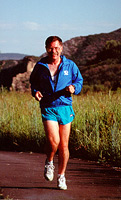
|
In 1996, Dr. Lefohn was the lead author of Chapter 4 (Environmental Concentrations, Patterns, and Exposure Estimates) of the U.S. EPA Air Quality Criteria for Ozone and Other Photochemical Oxidants, as well as a co-author of the exposure-response indices section in Chapter 5 (Environmental Effects of Ozone and Related Photochemical Oxidants). These documents formed the scientific support for the U.S. EPA's surface ozone standards to protect human health (primary) and vegetation (secondary). In the 2002-06 ozone review process, Dr. Lefohn co-authored sections in the Ozone Criteria Document that focused on vegetation |
exposure-/dose-response, air quality characterization, and background ozone. In 1993, Dr. Lefohn participated in a UN-ECE Workshop on Critical Levels for Ozone held in Bern, Switzerland, where he was invited to be one of the keynote presenters. In November 2005, he was invited to present a keynote paper (co-authored with Dr. Robert Musselman) "The Strengths and Weaknesses of Exposure- and Flux-Based Ozone Indices for Predicting Vegetation Effects" at the Critical Levels of Ozone Workshop held in Obergurgl, Tyrol, Austria.
In 1991, he was chairman of the UN World Meteorological Organization (WMO) Meeting of Experts to evaluate surface-level ozone exposures and trends at remote locations in the world. In 1989, he was the lead author of the National Acid Precipitation Assessment Program (NAPAP) State-of-Science Report No. 7: Air Quality Measurements and Characterizations for Vegetation Effects Research.
His past responsibilities have included his participation as senior researcher for the EPA's National Crop Loss Assessment Network (NCLAN). In this capacity, he was responsible for characterizing ambient air quality data and comparing the information with data collected under experimental conditions.
Dr. Lefohn has been involved for 26 years in all the American Lung Association's annual State of the Air reports (2000-2025). These reports provide a county-by-county summary of ozone (smog) and PM2.5 (soot) concentrations experienced across the United States. The annual report is extremely important in better understanding the variability in ozone exposure (both spatially and temporally) across the US as emission reductions and climate change factors interact with one another in a changing world.
Dr. Lefohn has published over 150
peer-reviewed papers (many as the lead author) and technical
reports, 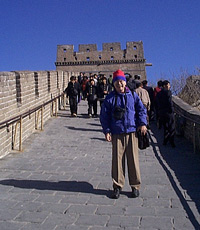 edited
four books, presented oral papers, and participated in a number
of television and radio interviews and international panel presentations.
A sampling of his publications is available. For 11 years, he served as an Executive Editor
of the prestigious scientific journal Atmospheric Environment.
He also served as an Adjunct Professor of Environmental Engineering
at Montana Tech in Butte, Montana. He served for several years
on the University of California at Davis' Science Advisory Committee
for the Center for Ecological Health Research. For several years
he was chairman of the Advisory Committee.
edited
four books, presented oral papers, and participated in a number
of television and radio interviews and international panel presentations.
A sampling of his publications is available. For 11 years, he served as an Executive Editor
of the prestigious scientific journal Atmospheric Environment.
He also served as an Adjunct Professor of Environmental Engineering
at Montana Tech in Butte, Montana. He served for several years
on the University of California at Davis' Science Advisory Committee
for the Center for Ecological Health Research. For several years
he was chairman of the Advisory Committee.
In May 2002, the Myrna Loy Center for the Performing and
Media Arts in Helena, Montana, awarded the Heart of Myrna
Loy Award to Dr. Lefohn. Dr. Lefohn was recognized as a primary
volunteer across several years helping the Myrna Loy Center to
regain its footing and to renew its many performing arts programs.
He did this as a Board member working on helping the organization
to do a critical analysis.
For over 50 years, Dr. Lefohn's research has influenced the ozone standard-setting process worldwide. Dr. Lefohn continues to focus his research on (1) the effects of surface ozone on human health and vegetation, (2) background surface ozone and its influence on attaining national and international ozone standards as well as affecting human health and vegetation risk assessments, and (3) the development of mathematical techniques which are extremely sensitive for identifying the influence of climate change on surface ozone and its effects on human health and vegetation.
Dr. Lefohn lives in peaceful Montana with his lovely wife (who teaches Qigong). Both are avid professional photographers who continuously donate their talents to the arts. A sampling of their work can be found in the Multimedia Center web page. Their photography work has been featured across the United States and New Zealand. Their creative efforts are well recognized in both local and national arts communities. Many of their photographs have been published in newspapers and national arts magazines. Dr. Lefohn was the creative arts photographer from 2003-2018 for the Helena Symphony Orchestra. A set of his photographs of the Helena Symphony Orchestra was published in Symphony magazine, a publication produced by the League of American Orchestras. Dr. Lefohn and his wife desire to make the world, through the arts, a much better place in which to live.
Copyright © 1995-2025 A.S.L. & Associates. All rights reserved.
Reproduction in whole or part without specific written permission is prohibited.
Privacy Notice